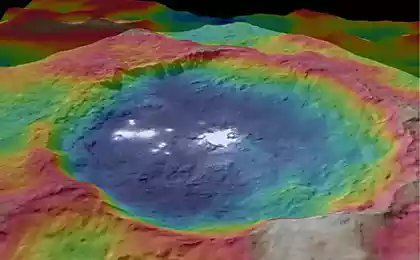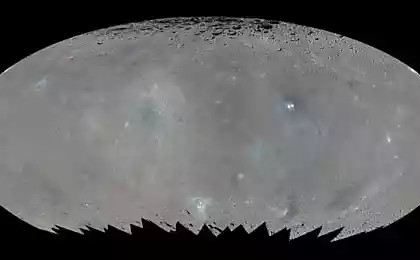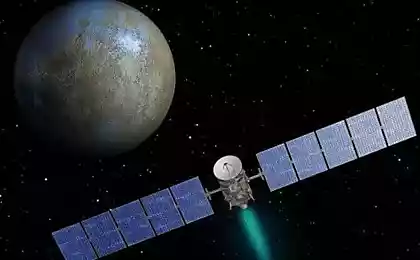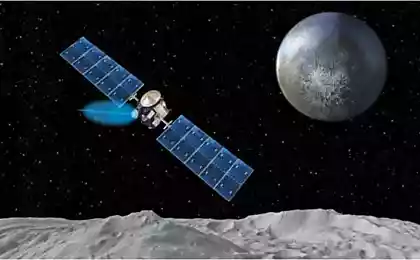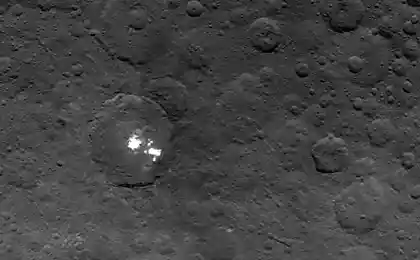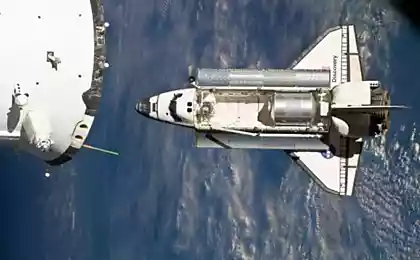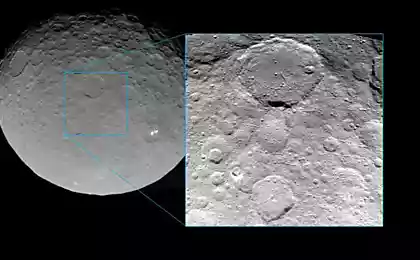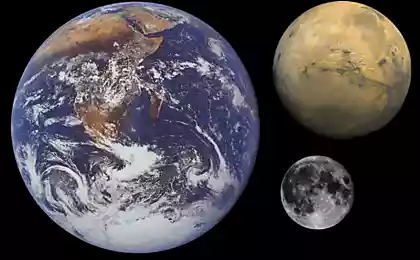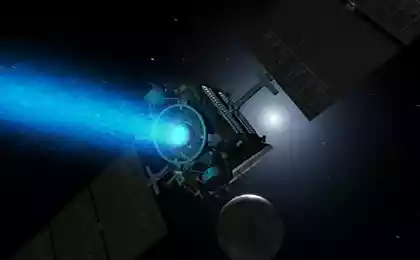546
NASA: Ceres also has water

Most scientists are convinced that life option, which we all know can exist only subject to the availability of liquid water. This, of course, not the only factor, but one of the main. In light of recent discoveries, we learned that the water in the liquid phase can exist on Mars, Europa, Enceladus, and even Pluto. Basically, we are talking about under-ice oceans or seas. It is this ocean, according to scientists from NASA, could dabble in the distant past Ceres. Perhaps liquid water on the body is now, of course, not on the surface.
About this the largest object of the asteroid belt helped to gather more information the Dawn probe, which reached the planetoid in 2015. Spacecraft sent to Earth more than 54,000 photos. With its help, scientists have studied the spectrum reflected from the surface of various regions of the planetoid sunlight. Added knowledge in the Treasury and the gamma-ray detector that could detect the presence of many chemical elements at depths up to 1 meter.
What now?
Two years study of the planetoid, the Dawn probe has detected large amounts of hydrogen. Scientists believe that hydrogen there is present not only in the form of hydroxide, but in the form of one of the two elements of the water molecule. Near the surface the water on Ceres is in its solid phase, i.e. in the form of ice.
When flying over some of the craters Dawn found that the bottom and walls of such craters is covered with water ice. Ice can exist virtually unchanged for billions of years. The fact that Ceres has no atmosphere and very cold — the temperature rarely rises above 110 degrees Kelvin. The ice was detected at least in 10 different craters, including a small crater Oxo, located near the North pole of the planetoid. 634 in other craters, as you see, there are areas where no sunlight reaches, never.
In such craters is water ice may persist, because if the sun's rays do not illuminate the ice, he doesn't sublimates, the water remains in the crystalline state.
According to Carol Raymond (Carol Raymond), Deputy scientific Director of the Dawn mission, in this crater ice, presumably, have appeared recently. But how to take him there?
Probably in some cases ice on Ceres put comets and other asteroids colliding from time to time with this planetoid. Mercury is also detected ice, but there, close to the Sun, water is formed, most likely, influenced by the "solar wind". The hydrogen reacts with the oxygen of the planet's surface, forming water, which then freezes.
On Ceres, most likely, it's different, because it is too far from the Sun, and the solar wind here is not as intense as on mercury.
But perhaps in the distant past, Ceres had been a period when there existed the under-ice ocean. Scientists say that this is circumstantial evidence. "We can only study the traces on the surface, but we have every reason to believe that under the hard surface of the planetoid, there was the ocean," said Raymond. It also States that he considers Ceres analogue of Europe and of Enceladus in terms of the possible presence of life on these objects.

Here shows a gradual change of illumination of the surface of Ceres over time (Source: Nature Video)
Dawn was originally sent to Ceres in order to obtain information about the initial stages of formation of the Solar system. In the asteroid belt, according to scientists, should remain the material from which the planets were formed in the result of the influence of gravitational and other forces.
As for the Ceres, then it may well be that the planetoid started to warm up after gaining a certain mass. The cause of heat is radioactive elements, of which several billion years ago the Solar system was more than now. Heating led to the fact that the ice began to melt and on Ceres, there must be liquid water under the surface of the planetoid. It was probably a large ocean. Now the task of scientists is to find out approached the conditions of Ceres, her inner reservoir, to sustain life, albeit very primitive.
Can be considered proven, experts say that Ceres is gradually moving away from the Sun. And since there was no atmosphere, the planet seems to have quickly cooled off. The ocean gradually began to freeze. Now there is a probability that there is at Ceres, remained liquid water. This is not the ocean, and a separate inclusion of the "window" is very salty and cold liquid water. Maybe this salt water, going outside, forms the mountain Ahuna Mons, with a height of 4 km and a base diameter of 17 miles. In all likelihood, this mountain is a typical, though very large, krivulka.
The sea Mons — not <a href="geektimes.ru/post/280012'>the only place on Ceres, where there was cryovolcanism. Tools of the Dawn probe recorded kriovulkanizma activity in other regions of the dwarf planet. However, it is not about the mountains, such as those described above. The number of craters formed by the impact of meteorites on the planet's surface. These craters are flat, which may indicate filling of the crater with liquid water after a meteorite impact. About this phenomenon it is possible to speak as about water lava filling the crater solidifies.
Ceres — closest to Sun and smallest among known dwarf planets in the Solar system. It is located as a number of other planetoids in the asteroid belt. Ceres was discovered January 1, 1801 Italian astronomer Giuseppe Piazzi at the Palermo astronomical Observatory. Some time Ceres was considered as a full-fledged planet in the Solar system. According to the results of defining the term "planet" International astronomical Union on 24 August 2006, XXVI General Assembly of the IAU were classified as dwarf planets. She was named after the Roman goddess of fertility Ceres.
Source: geektimes.ru/post/283784/
NASA launched the satellites with missiles launched from aircraft
For women who sleep with married men, there is a special place in hell



